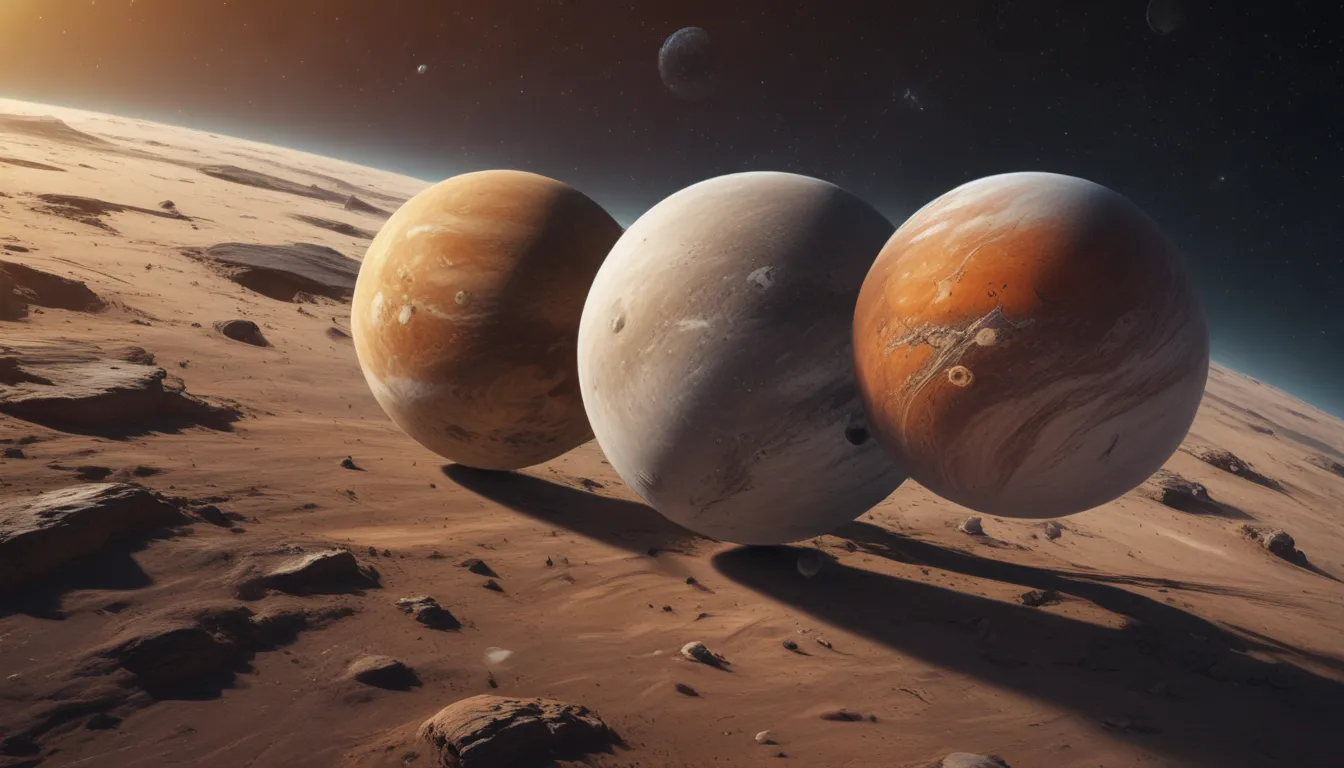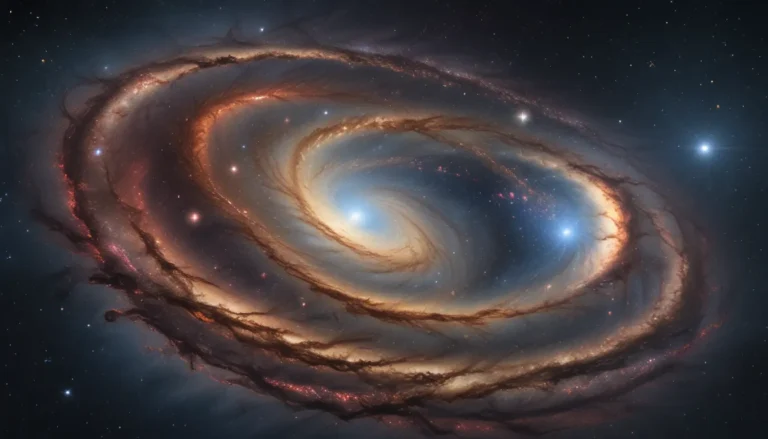The pictures we use in our articles might not show exactly what the words say. We choose these pictures to make you interested in reading more. The pictures work together with the words but don’t take their place. The words still tell you the important facts.
Are you curious about the smallest planet in our solar system? Join us on a captivating journey through Mercury, exploring its intriguing characteristics and unique features. From extreme temperature fluctuations to mysterious volcanic history, Mercury holds a wealth of secrets waiting to be uncovered. Let's dive into the wonders of this enigmatic planet and unearth the fascinating Mercury facts that will leave you awe-inspired.
Unveiling Mercury: A Planet of Extremes
Mercury, the planet closest to the Sun, boasts the most extreme temperature fluctuations in our solar system. During the day, its surface sizzles at a scorching 840 degrees Fahrenheit, hot enough to melt lead. As night falls, temperatures plummet to a bone-chilling -279 degrees Fahrenheit, creating a stark dichotomy of climate on this rocky planet.
Mercury: The Mighty Miniature
Measuring a mere 3,030 miles in diameter, Mercury proudly holds the title of the smallest planet in the solar system. Surpassing its diminutive size, Mercury circles the Sun at a staggering speed, completing its orbit in just 88 days while traveling at a velocity of 112,000 miles per hour. Despite its small stature, Mercury's swift journey around the Sun sets it apart as a planetary speedster.
Unraveling Mercury’s Volcanic Past
The rugged terrain of Mercury hints at a turbulent volcanic history. Smooth surfaces in the northern hemisphere suggest ancient lava flows that once sculpted the planet's landscape. While no active volcanoes exist today, evidence of past eruptions lingers in the form of smoothed crater rings, offering a glimpse into Mercury's fiery origins.
A Celestial Delight: Spotting Mercury in the Sky
Gaze into the evening sky and behold the dazzling sight of Mercury, one of the five planets visible to the naked eye. Situated low in the west at dusk or east at dawn, Mercury shines with a subtle brilliance, distinguishing itself from the twinkling stars. Joining Jupiter, Mars, Saturn, and Venus, Mercury enchants stargazers with its celestial presence.
Earth’s Elusive Neighbor: The Mystique of Mercury
Located 57 million miles from Earth, Mercury remains a distant neighbor in our cosmic neighborhood. Its proximity poses a challenge for astronomical observation, as the planet eludes the gaze of the Hubble Space Telescope due to its close proximity to the Sun. Despite its elusive nature, Mercury captivates astronomers and enthusiasts alike with its enigmatic allure.
Mercury Through the Ages: A Historical Discovery
While the discovery of Mercury lacks a singular attribution, the renowned astronomer Copernicus is believed to have been the first to observe the planet's orbit in the early 16th century. Subsequently, Galileo's observations in the 17th century furthered our understanding of Mercury's celestial dance, marking a pivotal moment in the history of astronomical exploration.
Gravity Defying: Weight Fluctuations on Mercury
Step foot on Mercury, and you'll experience a remarkable shift in your body weight. With significantly less gravity than Earth, a 100-pound individual would weigh only 38 pounds on Mercury. The planet's gravitational pull offers a unique perspective on weightlessness, underscoring the profound differences in gravitational forces across celestial bodies.
Delving into Mercury’s Molten Core
Beneath its rugged exterior lies Mercury's molten core, predominantly composed of iron. Over eons, the planet's core has cooled and contracted, shaping its wrinkled and cratered surface. Despite cooling, remnants of molten iron persist at the core's center, underscoring Mercury's dynamic geophysical characteristics.
A Cosmic Crater: The Monumental Caloris Basin
Witness the aftermath of a cataclysmic event that shaped Mercury's surface billions of years ago—the Caloris Basin. Created by a colossal asteroid impact, this monumental crater spans 960 miles in diameter, dwarfing the state of Texas in size. A testament to Mercury's turbulent past, the Caloris Basin stands as a testament to the planet's enduring geological evolution.
Ice and Fire: The Contrasts of Mercury’s Atmosphere
Amidst its blistering temperatures, Mercury harbors a surprising secret—ice may reside within its shadowy craters. Scientists speculate that the planet's polar regions, shrouded in darkness, could host icy deposits, offering a stark contrast to its scorching surface. The juxtaposition of fire and ice on Mercury illuminates the planet's diverse atmospheric conditions.
Exospheric Enigma: Mercury’s Thin Atmosphere
Mercury boasts the thinnest atmosphere in our solar system, characterized by an ethereal exosphere. Unlike traditional atmospheres, Mercury's exosphere defies conventional labeling, unveiling a dynamic interplay of particles and solar winds. This atmospheric anomaly underscores the planet's distinct atmospheric composition, enriching our understanding of celestial atmospheres.
Cosmic Revelations: Rediscovering Mercury’s Surface
In a groundbreaking revelation, astronomers debunked the belief of Mercury's smooth surface in 1973. The Mariner 10 Space Probe's flyby unveiled a rugged terrain akin to the Moon, unveiling Mercury as the most cratered planet in our solar system. This paradigm-shifting discovery reshaped our perceptions of Mercury's geological identity, unraveling its hidden features.
Tails of Mystery: Mercury’s Enigmatic Phenomenon
Venture into Mercury's atmosphere and witness a mesmerizing spectacle—the emergence of peculiar tails exuding from the planet's surface. NASA's observations reveal atmospheric trails of particles swirling in mysterious formations, tantalizing researchers with unexplained phenomena. Intriguingly tied to the planet's magnetosphere and solar wind dynamics, these mysterious tails herald a new frontier in understanding Mercury's atmospheric mysteries.
Concluding Mercury’s Tale: Exploring the Depths of Discovery
Embark on a captivating exploration of Mercury's celestial wonders, uncovering a tapestry of scientific marvels and cosmic enigmas. From its extreme temperatures to volcanic history, Mercury weaves a narrative of cosmic evolution and geological intrigue. As we delve into the heart of Mercury's mysteries, we unearth a realm of discovery and exploration, illuminating the boundless wonders of our solar system's enigmatic neighbor. Explore the depths of Mercury's cosmic tapestry and immerse yourself in the celestial wonders that await your discovery.






